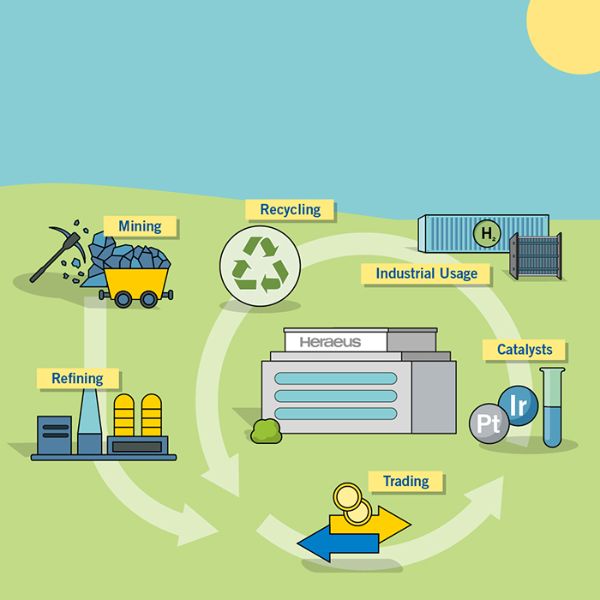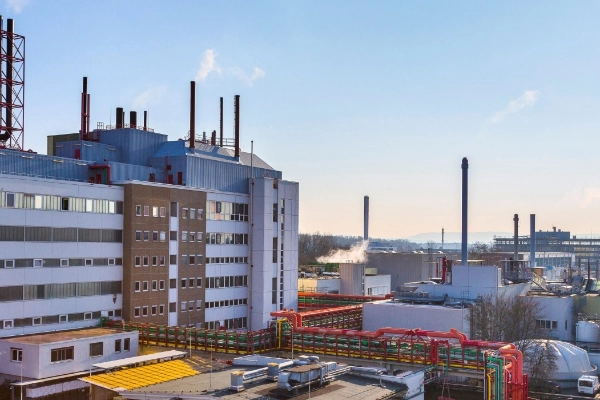Hydrogen economy as the energy concept of the future
Hydrogen is indispensable for achieving climate targets. Produced from renewable energies and CO2-free, green hydrogen has the potential as a renewable energy carrier to defossilize our energy, heating, economic, and transport systems.

Key materials for the hydrogen economy
The ramp-up of a national and European hydrogen economy depends on the efficient use of materials. This is especially true for precious metals used in the so-called PEM (proton exchange membrane) technology. One of the needed precious metals is iridium - a rare, but indispensable material. To successfully increase hydrogen production, the industry must take raw material requirements of substances such as iridium or platinum into consideration. Through its Global Business Unit Heraeus Precious Metals, Heraeus offers electrocatalysts and related services including recycling. As a result, hydrogen can be produced with less precious metal on the one hand and kept in the process sustainably through recovery on the other. Heraeus Precious Metals thus provides a portfolio that promotes the expansion of electrolytic hydrogen production using PEM electrolysis and contributes to the cost reduction and competitiveness of green hydrogen through low precious metal quantities.
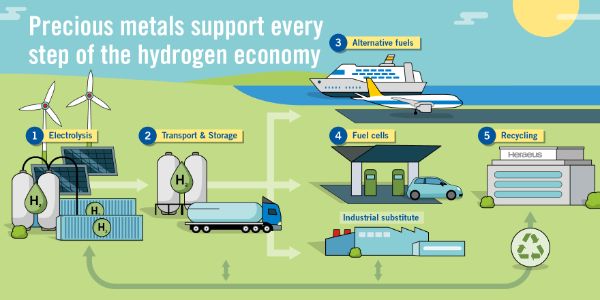
Heraeus supports the hydrogen economy in many ways
(1) Electrolysis
The first step is to produce green hydrogen efficiently. Electrolysis is the keyword: With the help of electricity from renewable energies, catalysts generate hydrogen from water - in other words, they convert electrical energy into chemical energy.
A leading technology for this is PEM electrolysis. Thanks to their excellent dynamic reaction time, PEM electrolyzers are ideal for storing fluctuating amounts of electricity from renewable energies in the form of hydrogen.
In electrolysis, water is broken down into hydrogen and oxygen by an electric current in the PEM electrolyzer. The electrode reactions are catalyzed by the two precious metals iridium and platinum. This process produces oxygen and hydrogen.
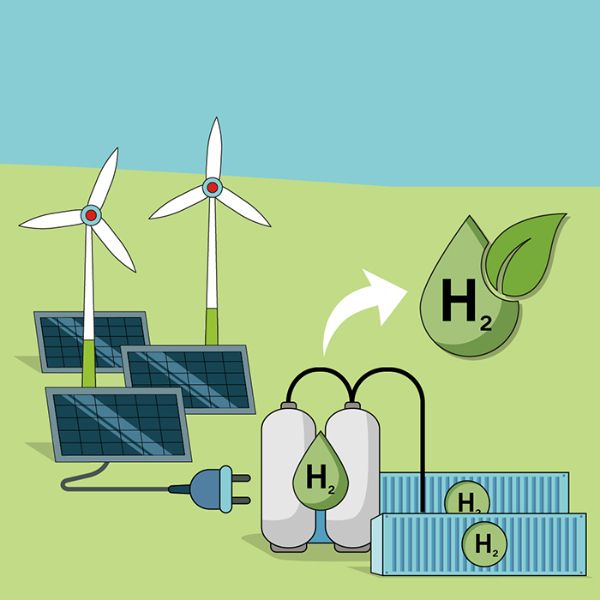
The challenge is that PEM electrolyzers need the extremely rare metal iridium. It has the necessary properties for splitting water but is not available worldwide in sufficient quantities to supply the expected capacities at the current rate of use in the electrolyzer. Heraeus Precious Metals is focusing its research on reducing the amount of iridium. Worldwide, only about eight tons of iridium are mined annually. The precious metal is not only used in the production of hydrogen but also other industrial applications. The annual production volume cannot be increased significantly - iridium is produced in small quantities during platinum mining. An increase would not be economically viable for mines.
Established solutions for producing hydrogen with pure iridium require an average of half a ton of the metal for one gigawatt of electrolyzer output. This makes it obvious: concerning the ambitious goals of governments, a bottleneck will very quickly arise.
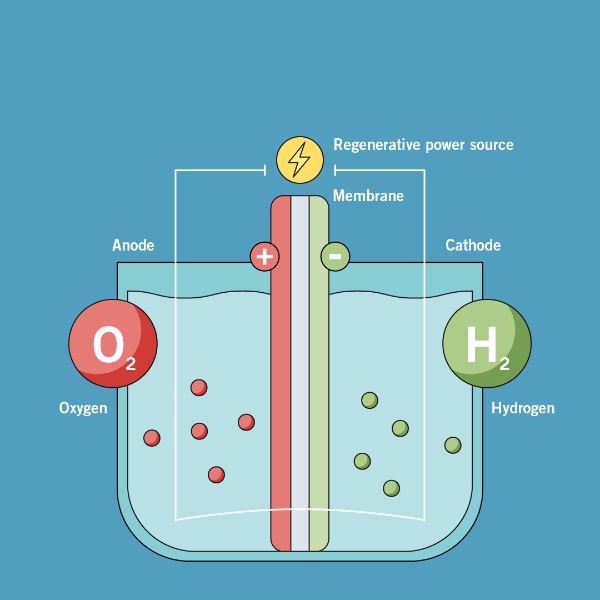
The future of the hydrogen economy must reduce the iridium content in PEM electrolysis.
In addition to established solutions with higher iridium loading, Heraeus has developed catalysts that use up to 90 percent less iridium at up to three times the power output. This also makes a decisive contribution to reducing costs. A milestone in making green hydrogen economically viable.
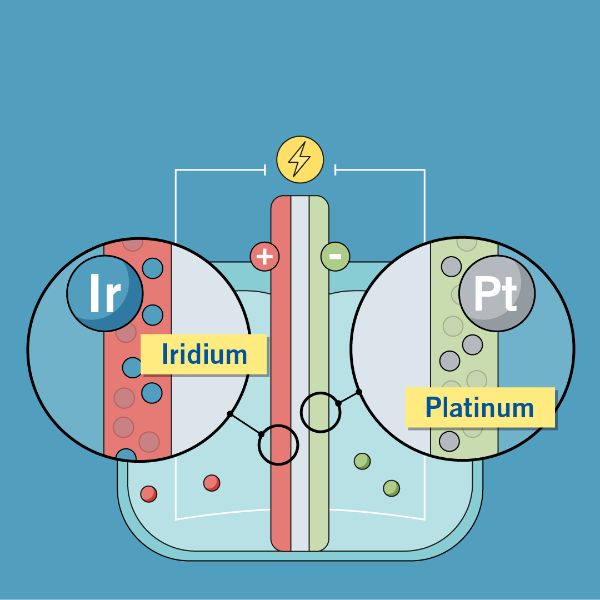
(2) Transport and storage
After production, the safe transportation of hydrogen is an issue. Hydrogen production is location-bound, as it takes place where electricity from renewable sources is available. The localization will lead to the formation of regional hydrogen hotspots in the future.
That means the transportation issue is urgent. As a highly volatile gas, hydrogen escapes quickly - it is also reactive and explosive, liquefying only at minus 253 degrees. These circumstances pose challenges to transporting and storing hydrogen safely. Any storage process requires additional energy. Research into various transportation and storage options has been ongoing for years. In addition to concepts such as converted natural gas pipelines and truck trailers for gaseous or liquid hydrogen, so-called hydrogen storage molecules show high potential.
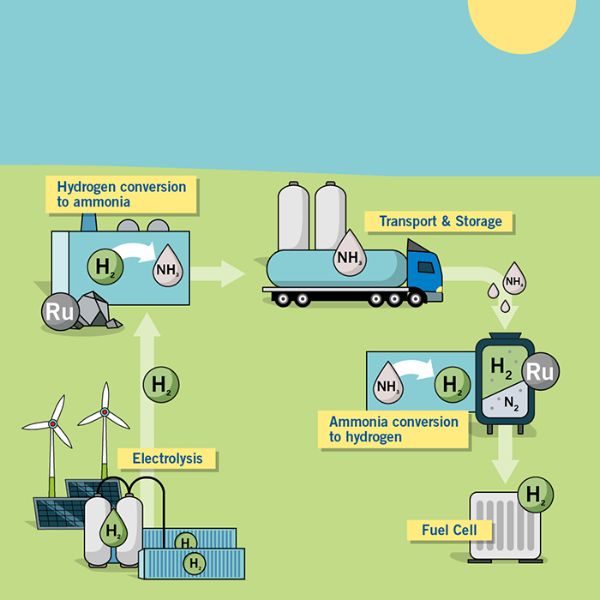
This involves introducing hydrogen into other chemical compounds. This makes sense if, for example, the new chemical is easier to liquefy or is already liquid. As in the case of transport using liquid organic hydrogen carriers (LOHC) or ammonia, the latter being convincing in several respects. It can be liquefied at minus 33 degrees, which saves energy. In addition, it can store more hydrogen per unit of space than hydrogen itself. Hydrogen can be recovered easily with minor energy losses.
Thus "packaged" in ammonia, the transport hurdle of hydrogen can be overcome. The prerequisite for the introduction and release of hydrogen from this carrier gas is an appropriate technology. Heraeus offers ready-to-use catalyst concepts with ruthenium. The development is aimed at the efficient use of the precious metal for the most complete possible conversion and recovery of hydrogen in this transport concept.
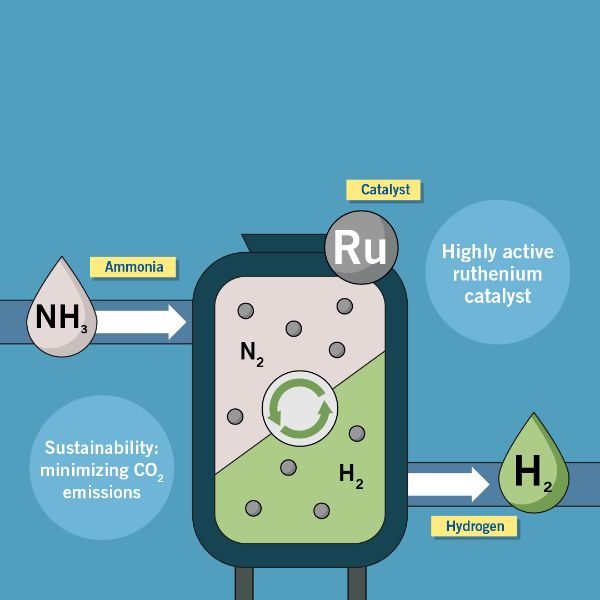
(3) Alternative fuels
The contribution of hydrogen is manifold - for example, hydrogen is also an important component for the production of alternative fuels.
Conventional fuels are derived from petroleum. Synthetic fuel is a sustainable alternative. This can be produced from carbon dioxide (CO2 ) and hydrogen - among other things through the so-called Fischer-Tropsch synthesis. To make the process sustainable, industrial waste gases rich in CO2 or CO2 from the air can be used. Together with green hydrogen, this creates a sustainable alternative to gasoline, diesel, and kerosene.
Precious metals, often based on ruthenium, platinum, or palladium, are again used in the syntheses of these fuels. They also play a role in the purification of exhaust gases, as they do today. The development of Heraeus Precious Metals focuses on the efficient use of precious metals. This reduces the cost of the catalyst and thus makes the production of alternative fuels competitive.
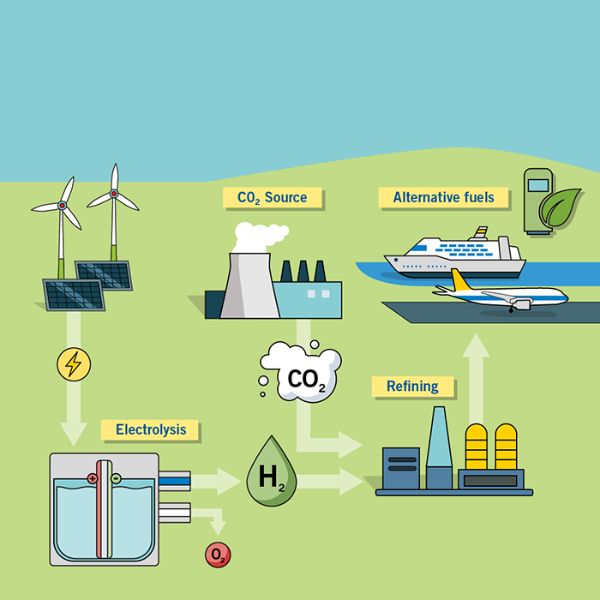
(4) Fuel cells
In addition to the industrial and commercial sectors, the transportation sector is focusing on hydrogen as a CO2 -free energy carrier. In the form of hydrogen fuel cells, it can thus become the driver of the future in electromobility. While smaller vehicle classes with lower range and load requirements can still manage with purely battery-electric engines, hydrogen propulsion is the ultimate for larger means of transport with short refueling times and long distances.
Proton exchange membrane (PEM) fuel cells, which convert hydrogen and atmospheric oxygen into water and release energy in the process, are currently emerging as the leading technology in this field. In fuel cell e-vehicles, the energy from the cell continuously drives an electric motor. In this way, large vehicles with transportation tasks, such as trucks, buses, or trains, can be refueled as quickly as with conventional fuels and cover long distances if necessary.
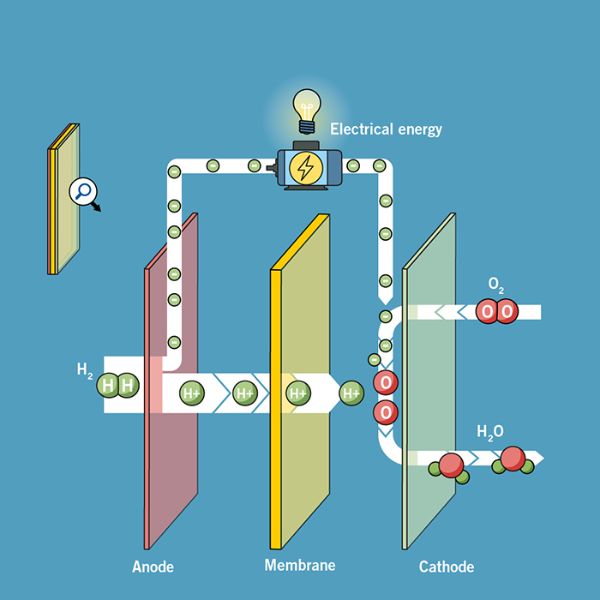
The heart of the PEM fuel cell is the membrane, which is coated on both sides with platinum-based catalysts. It is the platinum on the membrane that provides the necessary separation of the electrons and protons in the hydrogen so that electricity can be generated with the electrons. Heraeus has developed an entire portfolio of precious metal-based catalysts for the electrodes of such fuel cells for a wide range of operating conditions. With efficient use of platinum, these catalysts not only make fuel cell stacks more cost-effective but also more durable.
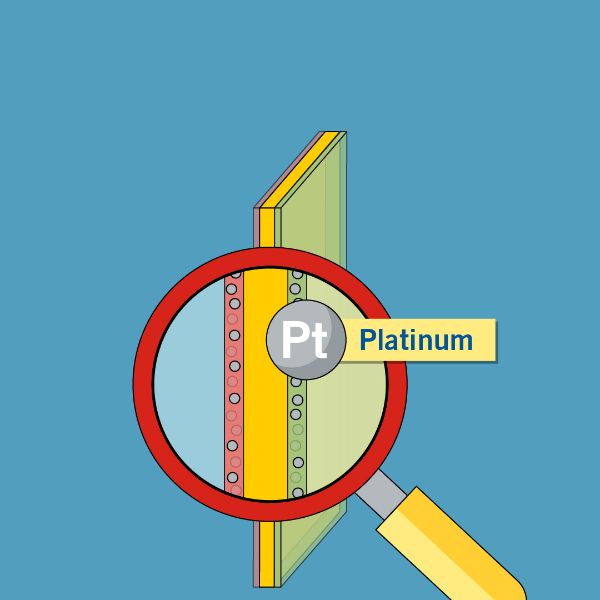
(5) Recycling
In a functioning hydrogen economy, precious metals with limited natural occurrence are often needed. It is therefore more important to be able to recover them after the end of their use. The sustainable availability of these resources is crucial, especially in the case of iridium for water electrolysis, and strongly influences subsequent cost competitiveness.
As one of the largest precious metal service providers in the world, Heraeus has the necessary know-how to procure the required precious metals, develop and manufacture the specialized precious metal catalysts, and finally efficiently recycle the used catalysts.
Even at the procurement stage, the experts' experience with models helps to secure prices. With each new generation, the catalyst specialist reduces the amount of iridium and platinum used in production. Added to this is the extensive knowledge in reprocessing, with which the precious metals can be recovered at a high rate and purity.
However, to implement a hydrogen economy, further reductions in precious metal loadings are required. For our energy future, it is therefore important to keep an eye on the high raw material requirements for the production and use of hydrogen.
